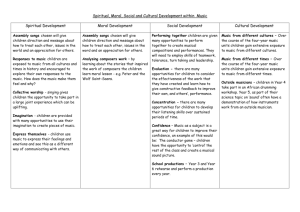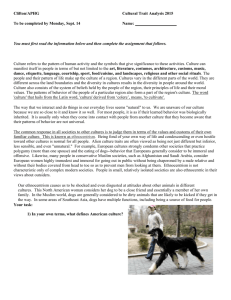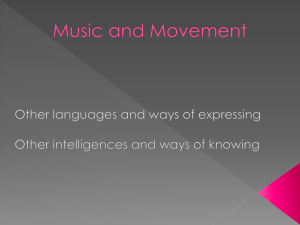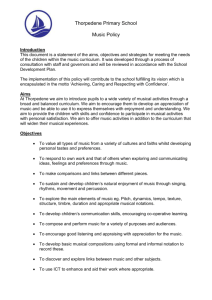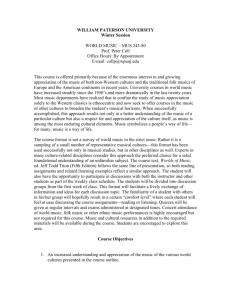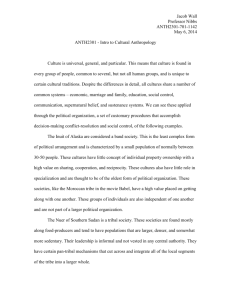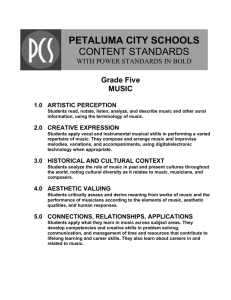World Music Final Exam Questions - MUS250
advertisement
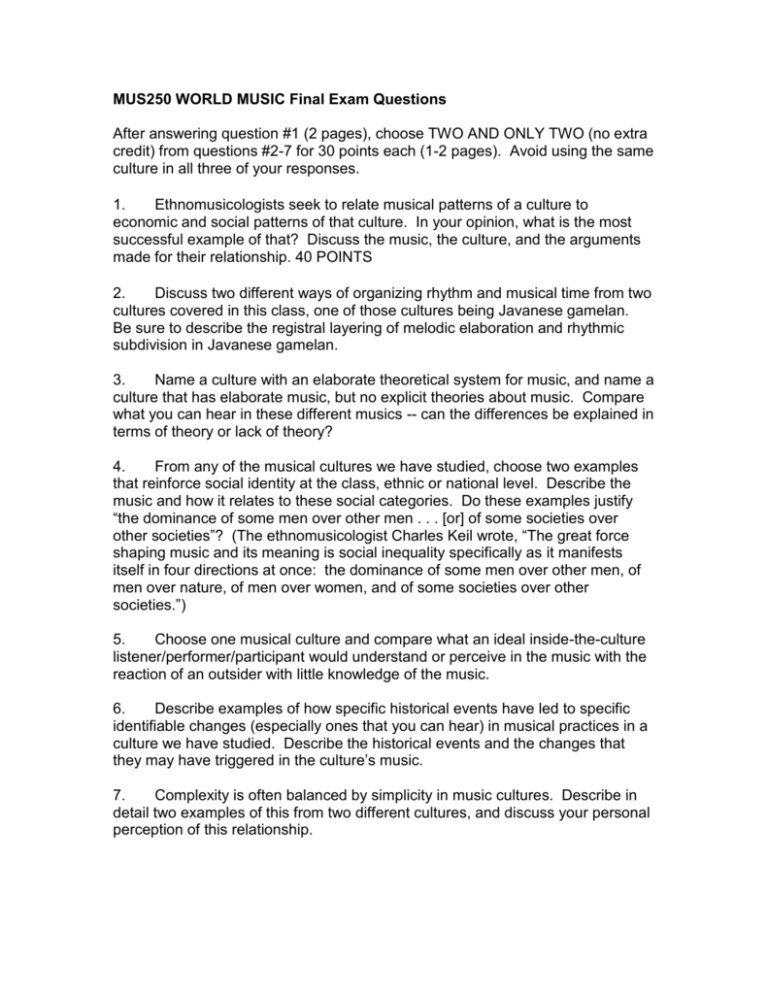
MUS250 WORLD MUSIC Final Exam Questions After answering question #1 (2 pages), choose TWO AND ONLY TWO (no extra credit) from questions #2-7 for 30 points each (1-2 pages). Avoid using the same culture in all three of your responses. 1. Ethnomusicologists seek to relate musical patterns of a culture to economic and social patterns of that culture. In your opinion, what is the most successful example of that? Discuss the music, the culture, and the arguments made for their relationship. 40 POINTS 2. Discuss two different ways of organizing rhythm and musical time from two cultures covered in this class, one of those cultures being Javanese gamelan. Be sure to describe the registral layering of melodic elaboration and rhythmic subdivision in Javanese gamelan. 3. Name a culture with an elaborate theoretical system for music, and name a culture that has elaborate music, but no explicit theories about music. Compare what you can hear in these different musics -- can the differences be explained in terms of theory or lack of theory? 4. From any of the musical cultures we have studied, choose two examples that reinforce social identity at the class, ethnic or national level. Describe the music and how it relates to these social categories. Do these examples justify “the dominance of some men over other men . . . [or] of some societies over other societies”? (The ethnomusicologist Charles Keil wrote, “The great force shaping music and its meaning is social inequality specifically as it manifests itself in four directions at once: the dominance of some men over other men, of men over nature, of men over women, and of some societies over other societies.”) 5. Choose one musical culture and compare what an ideal inside-the-culture listener/performer/participant would understand or perceive in the music with the reaction of an outsider with little knowledge of the music. 6. Describe examples of how specific historical events have led to specific identifiable changes (especially ones that you can hear) in musical practices in a culture we have studied. Describe the historical events and the changes that they may have triggered in the culture’s music. 7. Complexity is often balanced by simplicity in music cultures. Describe in detail two examples of this from two different cultures, and discuss your personal perception of this relationship. STANDARDS OF EVALUATION A+ = insightful work, written with clarity and style; personal; no errors; could be posted on the website as a model A = excellent work, thorough; a few minor technical errors and few writing problems; good choice of examples B = good work, clear understanding of concepts; a few technical errors and few writing problems; plausible choice of examples C = basic understanding, but with a conceptual error or two and unclear writing; the same example is used in all three answers D = some confusion of key concepts and mixing up of different cultures F = significant confusion of key concepts and mixing up of different cultures, but much better than a zero! Do your own work. Plagiarism will result in an F on the final and in the class, according to College policies outlined in the student handbook. You may share notes and discuss the questions with your colleagues, but your answers must be your own. Material from books (ha!) other than the textbook and all websites must have proper citations. These questions are open-ended and subjective, therefore if any two people choose the same questions and the same examples to answer those questions, it will look very suspicious! MUS250 WORLD MUSIC David Meckler Skyline College Cañada College

